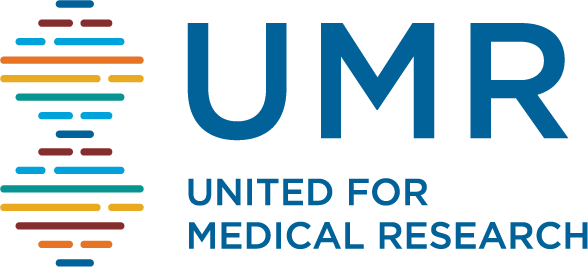May 10, 2011
May 10, 2011 – Two economic reports released this evening showcase the impact of National Institutes of Health (NIH) funding on U.S. job growth and global competitiveness in the health and life sciences industries. NIH directly and indirectly supported nearly 488,000 jobs and produced $68 billion in new economic activity in 2010 alone, according to a report from the nonprofit coalition, United for Medical Research (UMR). A complementary report from Battelle provided the first comprehensive analysis of the economic impact of the mapping of the human genome, a project that drove $796 billion in economic gains between 1988 and 2010 and created 310,000 jobs in 2010.
UMR, a group of leading research institutions, patient and health advocates and private industry, along with one of the nation’s leading economists, Everett M. Ehrlich, Ph.D., released the report, titled, “An Economic Engine: NIH Research, Employment, and the Future of the Medical Innovation Sector.” The report draws three conclusions: NIH extramural research is an important source of income and employment around the country; the complementary relationship between public NIH investment and private industry development is critical to the health and wellbeing of our nation; and the U.S.’s medical innovation sector is facing increasing challenges and must be preserved in order to maintain America’s competitiveness and position as the world leader in medical research.
Using the Department of Commerce’s RIMS II model, UMR’s report examines the output and employment effects of 2010 NIH extramural research funding and ARRA funding by state, ultimately calculating the number of jobs supported in each state by NIH funding. NIH funding generated the greatest number of jobs in California (71,633), Massachusetts (34,065), New York (33,610), Texas (31,001) and Pennsylvania (28,091) and also supported more than 10,000 jobs in each of the following states: Florida, Georgia, Illinois, Maine, Maryland, Michigan, Minnesota, North Carolina, Ohio, Tennessee and Washington.
Dr. Erhlich, the report’s author, discusses the critical need for the U.S. to continue competing globally through innovation to create new medicines, treatments, tests and equipment. Lifesaving and pioneering examples of the fruits of NIH-sponsored research are explored in the report, including cardiovascular treatment, genomic sequencing, neurotransmitter chemicals and monoclonal antibody therapies.
“This knowledge filters through the medical industries, strengthening U.S. research and testing laboratories, pharmaceutical producers, equipment manufacturers and, ultimately, practitioners and caregivers,” writes Ehrlich. “But this knowledge base must be continually renewed and refreshed, because once it is created, it can be imitated.”
Dr. Ehrlich cites economist Raymond Vernon’s theory of trade as a “product life cycle,” through which new and technologically advanced goods and services are exported and imitated by other countries, leaving the countries better positioned to both serve their own markets and compete internationally. “Staying ahead of these competitors through continued innovation allows the U.S. to maintain its position of leadership in the various medical innovation industries,” said Ehrlich.
“In the patient advocacy community, we often highlight the impact of NIH funding on groundbreaking advancements in research, such as improvements in treating heart disease, cancer, stroke, diabetes and Alzheimer’s disease,” said Donna K. Arnett, Ph.D., M.S.P.H., Chair of the Department of Epidemiology, University of Alabama at Birmingham and spokesperson for the American Heart Association, a UMR coalition member.
“But this report takes us a step further, highlighting the significant contribution of NIH in boosting economic activity and employment across every state in the U.S., especially critical as our economy is faced with growing public debt and fiscal deficits,” said Arnett. “We hope Members of Congress take a close look at this report as they wade into FY12 budget discussions this spring, and vote to increase NIH funding to help patients, boost job growth and keep our country competitive.”
Battelle’s report, with support from the Life Technologies Foundation, takes an in-depth look at the economic significance of the sequencing of the human genome, which began with funding in 1988 and was completed in 2003. With $3.8 billion in federal investment, the Human Genome Project (HGP) and its associated genomics advancements have yielded an economic impact of $796 billion since 1988 and in 2010 over 310,000 U.S. jobs were directly or indirectly supported by genomics research and the genomics-enabled industry. These are just the beginning of the benefits the report’s economists believe they’ll see from the human genome sequencing.
“Large scale benefits in human medicine, agriculture, energy and environment are still in their early stages. The best is truly yet to come,” said Simon Tripp, one of the report’s authors. “I believe the Human Genome Project is arguably the single most influential investment to have been made in modern science and a foundation for progress in the biological sciences moving forward.” For further information regarding Battelle, please visit www.battelle.org.
For more information on the report, “NIH: An Economic Engine: NIH Research, Employment, and the Future of the Medical Innovation Sector,” please visit https://www.unitedformedicalresearch.org/wp-content/uploads/2012/07/UMR_Economic-Engine.pdf, or click on the top link on the right side of this webpage.
About United for Medical Research:
United for Medical Research represents leading research institutions, patient and health advocates and private industry, joined together to seek steady increases in federal funding for the National Institutes of Health. The coalition groups consist of the American Cancer Society Cancer Action Network, American Diabetes Association, American Heart Association, Association of American Universities, Association of Public and Land Grant Universities, BD, Biotechnology Industry Organization, Harvard University, Johns Hopkins University, Life Technologies, Melanoma Research Alliance, PhRMA, Research!America, Stanford University, The Endocrine Society, University of Pennsylvania, University of Southern California, Vanderbilt University and Washington University in St. Louis.
###

